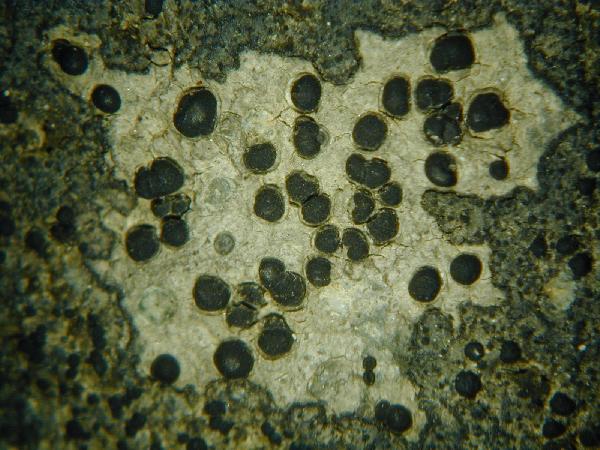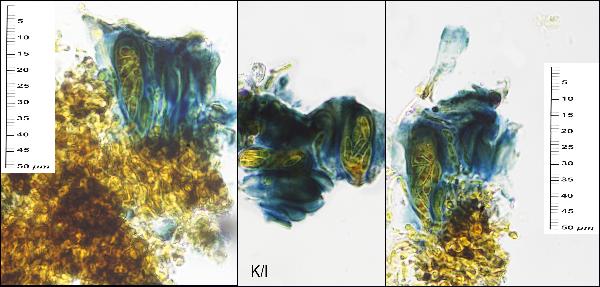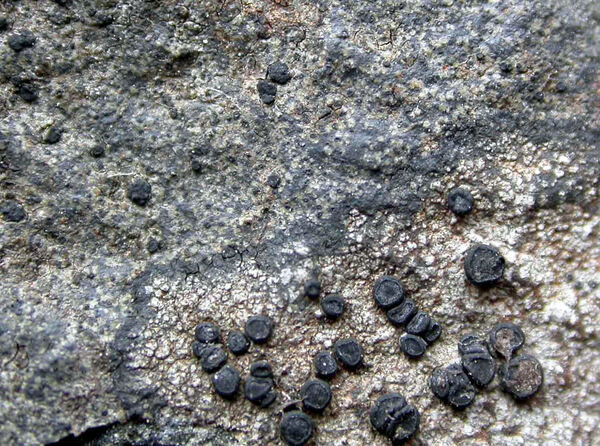Leimonis erratica (Körb.) R.C. Harris & Lendemer
Opuscula Philolichenum, 6: 151, 2009. Basionym: Lecidea erratica Körb. - Parerga Lichenol., 3: 223, 1861 (1865)
Synonyms: Lecidea demarginata Nyl.; Lecidea dispansa Nyl.; Lecidea expansa Nyl.; Lecidea tephrizans Leight.; Micarea erratica (Körb.) Hertel, Rambold & Pietschm.
Distribution:
Description: Thallus crustose, pale to dark grey, thin to thick, usually episubstratic, rimose to rimose-areolate, rarely endosubstratic and poorly evident, often delimited by a black, dendritic prothallus. Apothecia biatorine, black, epruinose, sessile and constricted at base, 0.2-0.4(-0.7) mm across, with a usually flat disc and a slightly raised, thin, persistent or finally excluded proper margin. Proper exciple well developed, prosoplectenchymatous, 0.03-0.05 mm wide laterally, consisting of radially arranged, branched and interconnected hyphae, blue-black in outer part, pale brown within; epithecium dull green, K+ green, N+ purple-red; hymenium colourless, 35-55 µm high; paraphyses sparingly branched and anastomosing from the base, 1.5-2.5(-3) µm thick, the apical cells not swollen; hypothecium dark brown, 40-80 µm high. Asci 8-spored, cylindrical-clavate, the I+ blue tholus with a wide, intensely I+ dark blue tube structure that expands towards the top, without a pale axial body. Ascospores 1-celled, hyaline, narrowly ellipsoid, (6-)7-9(-10) x (2-)3-4(-5) µm. Pycnidia often abundant, c. 0.1 mm wide, grey to black, sessile to half-immersed, with a greenish wall. Conidia cylindrical, 3-6 x 1.2-1.8(-2) µm. Photobiont chlorococcoid, the cells (7-)10-16(-26) µm wide. Spot tests: K-, C-, KC-, P-, UV-. Chemistry: without lichen substances.Note: on siliceous pebbles in open habitats, ecologically similar to Porpidia crustulata; widespread in the Holarctic region and also recorded from the Southern Hemisphere, with a few records from the Eastern Alps (Austria) outside the Italian territory; to be looked for in the Italian Alps.
Growth form: Crustose
Substrata: rocks and lignum
Photobiont: green algae other than Trentepohlia
Reproductive strategy: mainly sexual
Pioneer species
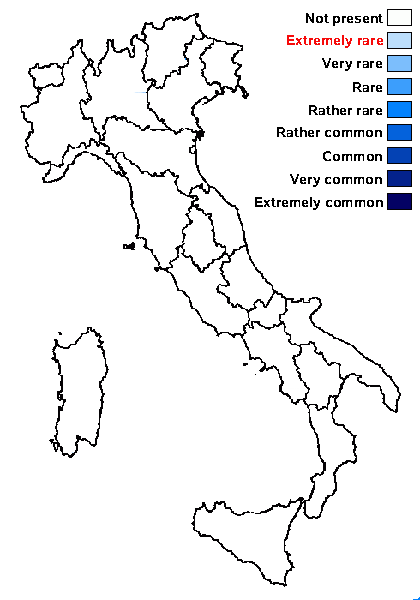
Predictive model

Source: http://fungi.myspecies.info/gallery/erratica - Licence: CC BY-NC 3. Photo uploaded by Mark Powell
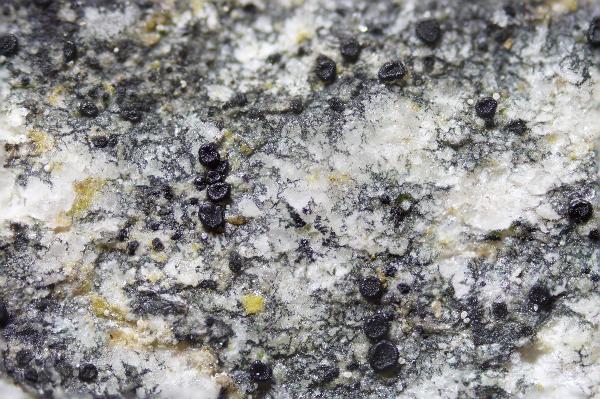
Marta González Garcia - Centro de Estudios Micologicos Asturianos
Sierra de Buseco, (Tineo-Asturias), 4-III-2025, en rocas cuarcíticas, a 750 m de altitud.
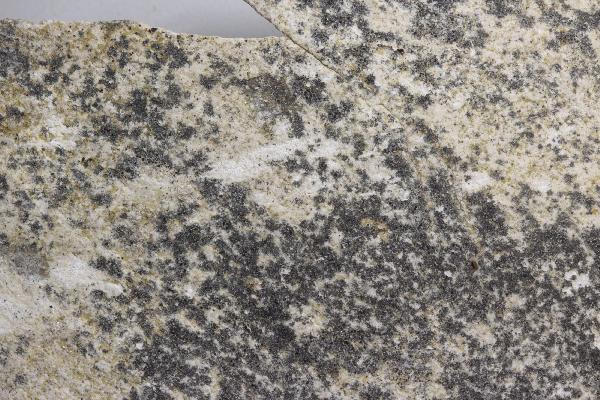
Marta González Garcia - Centro de Estudios Micologicos Asturianos
Sierra de Buseco, (Tineo-Asturias), 4-III-2025, en rocas cuarcíticas, a 750 m de altitud.

Marta González Garcia - Centro de Estudios Micologicos Asturianos
Sierra de Buseco, (Tineo-Asturias), 4-III-2025, en rocas cuarcíticas, a 750 m de altitud.

Marta González Garcia - Centro de Estudios Micologicos Asturianos
Sierra de Buseco, (Tineo-Asturias), 4-III-2025, en rocas cuarcíticas, a 750 m de altitud.
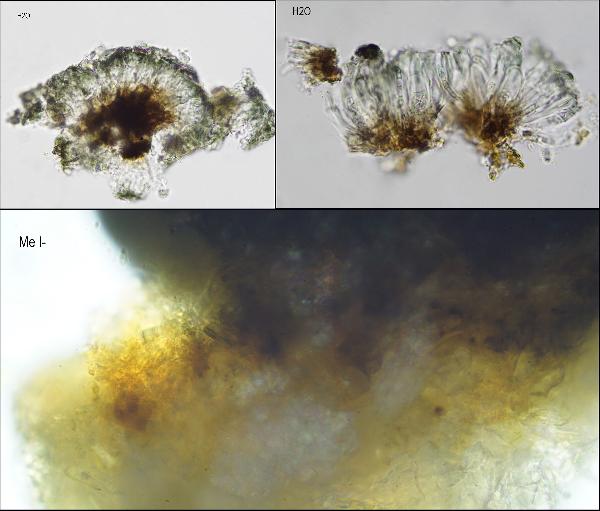
Marta González Garcia - Centro de Estudios Micologicos Asturianos
Sierra de Buseco, (Tineo-Asturias), 4-III-2025, en rocas cuarcíticas, a 750 m de altitud.

Marta González Garcia - Centro de Estudios Micologicos Asturianos
Sierra de Buseco, (Tineo-Asturias), 4-III-2025, en rocas cuarcíticas, a 750 m de altitud.
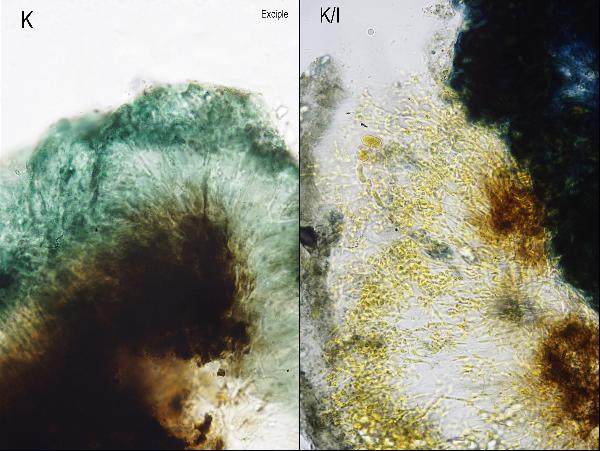
Marta González Garcia - Centro de Estudios Micologicos Asturianos
Sierra de Buseco, (Tineo-Asturias), 4-III-2025, en rocas cuarcíticas, a 750 m de altitud.
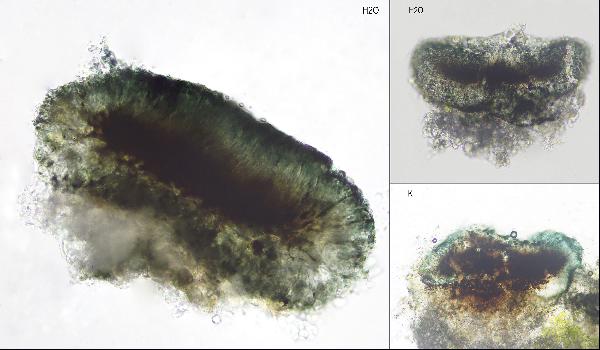
Marta González Garcia - Centro de Estudios Micologicos Asturianos
Sierra de Buseco, (Tineo-Asturias), 4-III-2025, en rocas cuarcíticas, a 750 m de altitud.
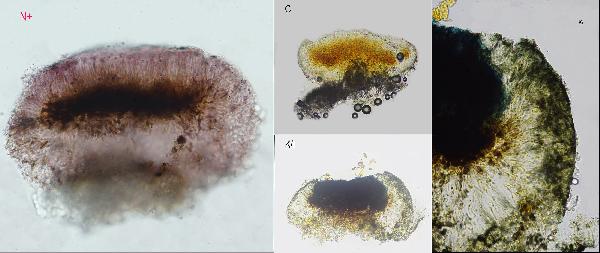
Marta González Garcia - Centro de Estudios Micologicos Asturianos
Sierra de Buseco, (Tineo-Asturias), 4-III-2025, en rocas cuarcíticas, a 750 m de altitud.
Growth form: Crustose
Substrata: rocks and lignum
Photobiont: green algae other than Trentepohlia
Reproductive strategy: mainly sexual
Pioneer species

Predictive model

Source: http://fungi.myspecies.info/gallery/erratica - Licence: CC BY-NC 3. Photo uploaded by Mark Powell

Marta González Garcia - Centro de Estudios Micologicos Asturianos
Sierra de Buseco, (Tineo-Asturias), 4-III-2025, en rocas cuarcíticas, a 750 m de altitud.

Marta González Garcia - Centro de Estudios Micologicos Asturianos
Sierra de Buseco, (Tineo-Asturias), 4-III-2025, en rocas cuarcíticas, a 750 m de altitud.

Marta González Garcia - Centro de Estudios Micologicos Asturianos
Sierra de Buseco, (Tineo-Asturias), 4-III-2025, en rocas cuarcíticas, a 750 m de altitud.

Marta González Garcia - Centro de Estudios Micologicos Asturianos
Sierra de Buseco, (Tineo-Asturias), 4-III-2025, en rocas cuarcíticas, a 750 m de altitud.

Marta González Garcia - Centro de Estudios Micologicos Asturianos
Sierra de Buseco, (Tineo-Asturias), 4-III-2025, en rocas cuarcíticas, a 750 m de altitud.

Marta González Garcia - Centro de Estudios Micologicos Asturianos
Sierra de Buseco, (Tineo-Asturias), 4-III-2025, en rocas cuarcíticas, a 750 m de altitud.

Marta González Garcia - Centro de Estudios Micologicos Asturianos
Sierra de Buseco, (Tineo-Asturias), 4-III-2025, en rocas cuarcíticas, a 750 m de altitud.

Marta González Garcia - Centro de Estudios Micologicos Asturianos
Sierra de Buseco, (Tineo-Asturias), 4-III-2025, en rocas cuarcíticas, a 750 m de altitud.

 INDEX FUNGORUM
INDEX FUNGORUM
 GBIF
GBIF
